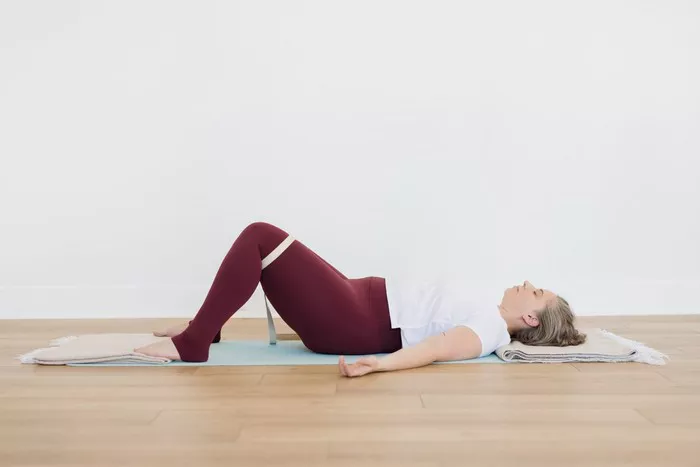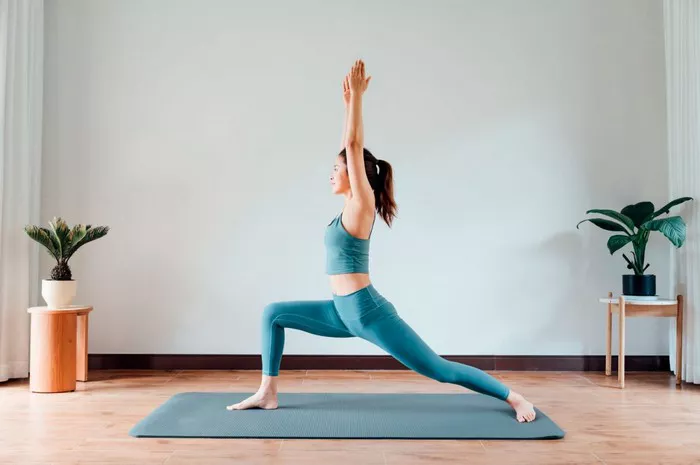Yoga is a practice that has been around for thousands of years. It combines physical postures, breathing techniques, and meditation. The various yoga asanas, or postures, serve to enhance physical strength, flexibility, and mental clarity. Each asana has its unique benefits and can be adapted to suit different levels of experience. Understanding these postures helps practitioners develop a deeper connection with their bodies and minds. This article will explore several key yoga asanas, their names, and the benefits they offer.
Highlighted Yoga Asanas
1. Tadasana (Mountain Pose)
Tadasana is a foundational posture in yoga. It teaches the importance of grounding and stability. To perform this pose, stand with your feet together. Distribute your weight evenly across your feet. Engage your thighs, lift your chest, and relax your shoulders. Arms should hang naturally by your sides or raised overhead. Hold this position while breathing deeply. Tadasana helps improve posture and alignment. It also encourages mental focus and calmness.
Practicing Tadasana regularly can lead to better balance. It strengthens the legs and core. This asana also promotes good circulation and can relieve tension in the body. Beginners find Tadasana easy to perform. It serves as a great introduction to more complex postures.
2. Adho Mukha Svanasana (Downward-Facing Dog)
Adho Mukha Svanasana, commonly known as Downward-Facing Dog, is a popular asana that stretches and strengthens the entire body. Start in a tabletop position on your hands and knees. Press into your palms and tuck your toes. Lift your hips up and back, straightening your legs and arms. Your body should form an inverted “V” shape. Keep your head between your arms and your heels reaching toward the ground. This pose lengthens the spine and opens the shoulders.
The benefits of Downward-Facing Dog include increased flexibility in the hamstrings and calves. It strengthens the arms, legs, and core. This asana also calms the mind and relieves stress. Practicing this pose regularly can help alleviate back pain and improve overall body awareness.
3. Virabhadrasana I (Warrior I Pose)
Virabhadrasana I, or Warrior I, is a powerful standing pose that builds strength and stability. Begin by standing tall and stepping one foot back, bending your front knee at a right angle. Your back leg should be straight, with your foot firmly planted on the ground. Raise your arms overhead, keeping them parallel. Look forward or up at your hands. This pose strengthens the legs and opens the hips and chest.
Warrior I enhances concentration and determination. It builds stamina and promotes good posture. This asana also encourages a sense of grounding and can improve balance. Incorporating Warrior I into your practice can energize your body and mind.
4. Virabhadrasana II (Warrior II Pose)
Virabhadrasana II, or Warrior II, follows naturally from Warrior I. From the previous position, open your arms to the sides, parallel to the ground. Turn your head to look over your front hand. Your front knee should stay bent while your back leg remains straight. This asana strengthens the legs and improves circulation in the lower body.
Warrior II fosters endurance and stability. It also opens the hips and chest, enhancing flexibility. This pose encourages a strong sense of presence and confidence. Regular practice can help develop focus and discipline.
5. Trikonasana (Triangle Pose)
Trikonasana, or Triangle Pose, is a side-bending posture that stretches the entire body. Start by standing with your feet wide apart. Extend your arms to the sides and tilt to one side, reaching your hand toward your ankle or the floor. Keep the other arm raised above your shoulder. This position creates a triangular shape with your body.
Triangle Pose enhances flexibility in the legs and spine. It also strengthens the core and improves balance. Practicing Trikonasana can help relieve tension in the back and neck. This asana promotes a sense of openness and clarity in the mind.
6. Bhujangasana (Cobra Pose)
Bhujangasana, or Cobra Pose, is a gentle backbend that opens the chest and strengthens the spine. Lie on your stomach with your legs straight behind you. Place your hands under your shoulders and press into the ground. Lift your chest while keeping your elbows close to your body. Look slightly upward, breathing deeply.
Cobra Pose improves spinal flexibility and strengthens the back muscles. It opens the heart and lungs, enhancing breathing capacity. This asana can alleviate stress and fatigue. Regular practice can promote good posture and a sense of empowerment.
7. Balasana (Child’s Pose)
Balasana, or Child’s Pose, is a restorative posture that promotes relaxation. Start by kneeling on the floor, then sit back on your heels. Lean forward, resting your forehead on the ground. Stretch your arms in front of you or let them rest beside your body. Breathe deeply and relax.
Child’s Pose calms the nervous system and reduces stress. It stretches the hips, thighs, and spine. This asana can be a great way to release tension after a challenging practice. Incorporating Balasana into your routine can help restore energy and balance.
8. Setu Bandhasana (Bridge Pose)
Setu Bandhasana, or Bridge Pose, is a backbend that strengthens the legs and opens the chest. Lie on your back with your knees bent and feet flat on the floor. Press your feet into the ground as you lift your hips. Clasp your hands under your back, or keep your arms by your sides. Hold this position while breathing deeply.
Bridge Pose strengthens the back, glutes, and legs. It also opens the heart and improves circulation. This asana can alleviate stress and anxiety. Practicing Setu Bandhasana can enhance flexibility and body awareness.
9. Sarvangasana (Shoulder Stand)
Sarvangasana, or Shoulder Stand, is an inversion that promotes balance and calmness. Lie on your back and lift your legs overhead. Support your lower back with your hands. Your body should be straight, forming a vertical line. This pose improves blood circulation and stimulates the thyroid gland.
Shoulder Stand builds strength in the upper body and core. It calms the mind and reduces stress. Regular practice can enhance focus and clarity. This asana is also known for its rejuvenating effects.
10. Savasana (Corpse Pose)
Savasana, or Corpse Pose, is a resting posture often practiced at the end of a session. Lie on your back with your legs slightly apart and arms at your sides. Close your eyes and focus on your breath. Allow your body to relax completely.
Corpse Pose promotes deep relaxation and stress relief. It helps integrate the benefits of the practice. Savasana calms the mind and body, enhancing overall well-being. Practicing this asana regularly can lead to a more profound sense of peace and mindfulness.
See also: Finding Relief: Yoga Poses for Trapped Gas
Incorporating Asanas into Your Practice
Yoga asanas are not just physical exercises. They are tools for self-discovery and personal growth. Each pose offers unique benefits that can improve physical health and mental clarity. To make the most of your practice, focus on your breath and align your movements with your intentions. Experiment with different asanas to find what resonates with you. With regular practice, you will notice positive changes in your body and mind.
Conclusion: Embracing the Journey of Yoga
The journey of yoga is personal and unique. Each asana provides opportunities for growth and healing. By understanding the different yoga asanas, you can develop a practice that supports your goals. Whether you seek strength, flexibility, or relaxation, there is a pose for you. Embrace the journey and allow your practice to evolve. With patience and dedication, the benefits of yoga will unfold in your life.
You Might Be Interested In




















